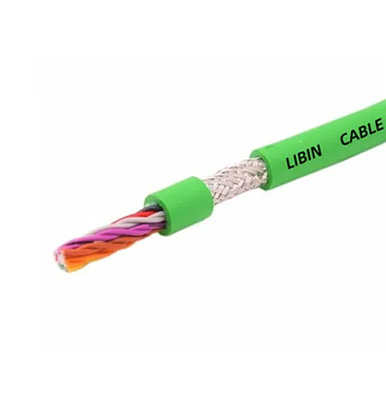Encoder Cables are essential components for transmitting precise data signals between encoders and control systems in industrial machinery and automation applications. Constructed with high-quality conductors and durable insulation, these cables ensure minimal signal loss, reduce electromagnetic interference (EMI), and maintain accurate motion control. Ideal for robotics, CNC machines, and automated production lines, encoder cables provide reliable performance, flexibility, and longevity even in demanding industrial environments.
Ensuring encoder cables meet strict quality standards is vital for consistent performance and safety.
Continuity Test: Confirms each conductor is correctly connected.
Insulation Resistance Test: Ensures proper insulation and prevents short circuits.
Voltage Drop Test: Measures voltage loss over cable length.
Bend Test: Checks flexibility and torsion resistance.
Abrasion Test: Verifies jacket durability against wear and friction.
Tensile Test: Ensures the cable can withstand pulling forces without damage.
UL, CE, and RoHS certified.
ISO 9001 quality management system compliance.
Reports available for batch verification.
| Test Type | Parameters Tested | Standard / Requirement |
|---|---|---|
| Electrical | Continuity, Insulation, Voltage Drop | IEC / UL Standards |
| Mechanical | Bend, Abrasion, Tensile | IEC / ISO Guidelines |
| Certification | UL, CE, RoHS | Regulatory Compliance |
Proper installation ensures optimal performance and longevity.
Verify cable type, length, and connector compatibility.
Inspect for visible damage.
Plan the cable path to minimize bends and avoid sharp edges.
Keep distance from high-power lines to reduce EMI.
Align connectors properly and secure firmly.
Avoid excessive force that could damage pins or housing.
Use cable ties or clamps to prevent movement.
Avoid over-tightening to maintain flexibility.
Conduct continuity and signal integrity checks.
Verify encoder feedback is accurate on the control system.
| Step | Action | Notes |
|---|---|---|
| Preparation | Verify cable specs and inspect | Prevents installation errors |
| Routing | Plan path and avoid sharp edges | Reduces EMI and physical stress |
| Connection | Secure connectors | Ensure stable signal transmission |
| Securing | Use clamps or ties | Maintains cable position |
| Testing | Continuity and signal checks | Confirms proper operation |

Regular maintenance helps extend the life of encoder cables and maintain system performance.
Check for cuts, abrasions, or insulation damage.
Inspect connectors for corrosion or looseness.
Wipe cables with a dry or slightly damp cloth.
Avoid harsh chemicals that could degrade insulation.
Avoid excessive bending, twisting, or pulling.
Ensure cables are not pinched or crushed during operation.
Store cables in a cool, dry place when not in use.
Keep away from direct sunlight and moisture.
| Task | Frequency | Notes |
|---|---|---|
| Visual Inspection | Weekly | Check for cuts, abrasions |
| Cleaning | Monthly | Use safe cleaning methods |
| Handling Precautions | Ongoing | Avoid twisting or pulling |
| Storage | As Needed | Protect from sun and moisture |
Correct usage ensures accurate encoder feedback and reliable operation.
Connect the encoder cable to the encoder and control system.
Ensure pin alignment and firm connection.
Power the system after verifying all connections.
Monitor for correct encoder signals.
Perform necessary calibration on the control system.
Verify encoder readings match expected positions.
Observe for any signal interruptions or anomalies.
Avoid sudden movements that stress the cable.
Check for loose connections if signal errors occur.
Inspect cable for physical damage or EMI interference.
Replace cable if faults persist.
| Step | Action | Notes |
|---|---|---|
| Connection | Connect to encoder and controller | Ensure proper pin alignment |
| Power On | Activate system | Monitor for signal accuracy |
| Calibration | Perform control system calibration | Verify encoder readings |
| Operation | Run machine and monitor feedback | Prevent stress on cable |
| Troubleshooting | Inspect connections and cable | Replace if necessary |
Encoder Cables are vital for precise data transmission in industrial automation and robotic systems. With thorough quality inspections, easy installation, proper daily maintenance, and correct usage, these cables provide reliable performance, durability, and signal integrity. Selecting high-quality, certified encoder cables ensures accurate feedback, reduces downtime, and enhances the efficiency of automated production lines and machinery.
本网站使用 cookie 来确保您在我们的网站上获得最佳体验。